Ling Zhou
Dual Semantic-Aware Network for Noise Suppressed Ultrasound Video Segmentation
Jul 10, 2025Abstract:Ultrasound imaging is a prevalent diagnostic tool known for its simplicity and non-invasiveness. However, its inherent characteristics often introduce substantial noise, posing considerable challenges for automated lesion or organ segmentation in ultrasound video sequences. To address these limitations, we propose the Dual Semantic-Aware Network (DSANet), a novel framework designed to enhance noise robustness in ultrasound video segmentation by fostering mutual semantic awareness between local and global features. Specifically, we introduce an Adjacent-Frame Semantic-Aware (AFSA) module, which constructs a channel-wise similarity matrix to guide feature fusion across adjacent frames, effectively mitigating the impact of random noise without relying on pixel-level relationships. Additionally, we propose a Local-and-Global Semantic-Aware (LGSA) module that reorganizes and fuses temporal unconditional local features, which capture spatial details independently at each frame, with conditional global features that incorporate temporal context from adjacent frames. This integration facilitates multi-level semantic representation, significantly improving the model's resilience to noise interference. Extensive evaluations on four benchmark datasets demonstrate that DSANet substantially outperforms state-of-the-art methods in segmentation accuracy. Moreover, since our model avoids pixel-level feature dependencies, it achieves significantly higher inference FPS than video-based methods, and even surpasses some image-based models. Code can be found in \href{https://github.com/ZhouL2001/DSANet}{DSANet}
FinSage: A Multi-aspect RAG System for Financial Filings Question Answering
Apr 20, 2025Abstract:Leveraging large language models in real-world settings often entails a need to utilize domain-specific data and tools in order to follow the complex regulations that need to be followed for acceptable use. Within financial sectors, modern enterprises increasingly rely on Retrieval-Augmented Generation (RAG) systems to address complex compliance requirements in financial document workflows. However, existing solutions struggle to account for the inherent heterogeneity of data (e.g., text, tables, diagrams) and evolving nature of regulatory standards used in financial filings, leading to compromised accuracy in critical information extraction. We propose the FinSage framework as a solution, utilizing a multi-aspect RAG framework tailored for regulatory compliance analysis in multi-modal financial documents. FinSage introduces three innovative components: (1) a multi-modal pre-processing pipeline that unifies diverse data formats and generates chunk-level metadata summaries, (2) a multi-path sparse-dense retrieval system augmented with query expansion (HyDE) and metadata-aware semantic search, and (3) a domain-specialized re-ranking module fine-tuned via Direct Preference Optimization (DPO) to prioritize compliance-critical content. Extensive experiments demonstrate that FinSage achieves an impressive recall of 92.51% on 75 expert-curated questions derived from surpasses the best baseline method on the FinanceBench question answering datasets by 24.06% in accuracy. Moreover, FinSage has been successfully deployed as financial question-answering agent in online meetings, where it has already served more than 1,200 people.
QIRL: Boosting Visual Question Answering via Optimized Question-Image Relation Learning
Apr 04, 2025Abstract:Existing debiasing approaches in Visual Question Answering (VQA) primarily focus on enhancing visual learning, integrating auxiliary models, or employing data augmentation strategies. However, these methods exhibit two major drawbacks. First, current debiasing techniques fail to capture the superior relation between images and texts because prevalent learning frameworks do not enable models to extract deeper correlations from highly contrasting samples. Second, they do not assess the relevance between the input question and image during inference, as no prior work has examined the degree of input relevance in debiasing studies. Motivated by these limitations, we propose a novel framework, Optimized Question-Image Relation Learning (QIRL), which employs a generation-based self-supervised learning strategy. Specifically, two modules are introduced to address the aforementioned issues. The Negative Image Generation (NIG) module automatically produces highly irrelevant question-image pairs during training to enhance correlation learning, while the Irrelevant Sample Identification (ISI) module improves model robustness by detecting and filtering irrelevant inputs, thereby reducing prediction errors. Furthermore, to validate our concept of reducing output errors through filtering unrelated question-image inputs, we propose a specialized metric to evaluate the performance of the ISI module. Notably, our approach is model-agnostic and can be integrated with various VQA models. Extensive experiments on VQA-CPv2 and VQA-v2 demonstrate the effectiveness and generalization ability of our method. Among data augmentation strategies, our approach achieves state-of-the-art results.
Short-Term Electricity-Load Forecasting by Deep Learning: A Comprehensive Survey
Aug 29, 2024Abstract:Short-Term Electricity-Load Forecasting (STELF) refers to the prediction of the immediate demand (in the next few hours to several days) for the power system. Various external factors, such as weather changes and the emergence of new electricity consumption scenarios, can impact electricity demand, causing load data to fluctuate and become non-linear, which increases the complexity and difficulty of STELF. In the past decade, deep learning has been applied to STELF, modeling and predicting electricity demand with high accuracy, and contributing significantly to the development of STELF. This paper provides a comprehensive survey on deep-learning-based STELF over the past ten years. It examines the entire forecasting process, including data pre-processing, feature extraction, deep-learning modeling and optimization, and results evaluation. This paper also identifies some research challenges and potential research directions to be further investigated in future work.
Generative adversarial learning with optimal input dimension and its adaptive generator architecture
May 06, 2024Abstract:We investigate the impact of the input dimension on the generalization error in generative adversarial networks (GANs). In particular, we first provide both theoretical and practical evidence to validate the existence of an optimal input dimension (OID) that minimizes the generalization error. Then, to identify the OID, we introduce a novel framework called generalized GANs (G-GANs), which includes existing GANs as a special case. By incorporating the group penalty and the architecture penalty developed in the paper, G-GANs have several intriguing features. First, our framework offers adaptive dimensionality reduction from the initial dimension to a dimension necessary for generating the target distribution. Second, this reduction in dimensionality also shrinks the required size of the generator network architecture, which is automatically identified by the proposed architecture penalty. Both reductions in dimensionality and the generator network significantly improve the stability and the accuracy of the estimation and prediction. Theoretical support for the consistent selection of the input dimension and the generator network is provided. Third, the proposed algorithm involves an end-to-end training process, and the algorithm allows for dynamic adjustments between the input dimension and the generator network during training, further enhancing the overall performance of G-GANs. Extensive experiments conducted with simulated and benchmark data demonstrate the superior performance of G-GANs. In particular, compared to that of off-the-shelf methods, G-GANs achieves an average improvement of 45.68% in the CT slice dataset, 43.22% in the MNIST dataset and 46.94% in the FashionMNIST dataset in terms of the maximum mean discrepancy or Frechet inception distance. Moreover, the features generated based on the input dimensions identified by G-GANs align with visually significant features.
An Empirical Study of Super-resolution on Low-resolution Micro-expression Recognition
Oct 16, 2023



Abstract:Micro-expression recognition (MER) in low-resolution (LR) scenarios presents an important and complex challenge, particularly for practical applications such as group MER in crowded environments. Despite considerable advancements in super-resolution techniques for enhancing the quality of LR images and videos, few study has focused on investigate super-resolution for improving LR MER. The scarcity of investigation can be attributed to the inherent difficulty in capturing the subtle motions of micro-expressions, even in original-resolution MER samples, which becomes even more challenging in LR samples due to the loss of distinctive features. Furthermore, a lack of systematic benchmarking and thorough analysis of super-resolution-assisted MER methods has been noted. This paper tackles these issues by conducting a series of benchmark experiments that integrate both super-resolution (SR) and MER methods, guided by an in-depth literature survey. Specifically, we employ seven cutting-edge state-of-the-art (SOTA) MER techniques and evaluate their performance on samples generated from 13 SOTA SR techniques, thereby addressing the problem of super-resolution in MER. Through our empirical study, we uncover the primary challenges associated with SR-assisted MER and identify avenues to tackle these challenges by leveraging recent advancements in both SR and MER methodologies. Our analysis provides insights for progressing toward more efficient SR-assisted MER.
Toroidal Coordinates: Decorrelating Circular Coordinates With Lattice Reduction
Dec 14, 2022

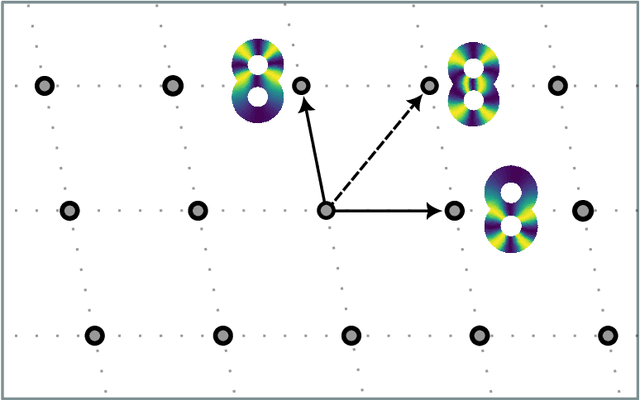

Abstract:The circular coordinates algorithm of de Silva, Morozov, and Vejdemo-Johansson takes as input a dataset together with a cohomology class representing a $1$-dimensional hole in the data; the output is a map from the data into the circle that captures this hole, and that is of minimum energy in a suitable sense. However, when applied to several cohomology classes, the output circle-valued maps can be "geometrically correlated" even if the chosen cohomology classes are linearly independent. It is shown in the original work that less correlated maps can be obtained with suitable integer linear combinations of the cohomology classes, with the linear combinations being chosen by inspection. In this paper, we identify a formal notion of geometric correlation between circle-valued maps which, in the Riemannian manifold case, corresponds to the Dirichlet form, a bilinear form derived from the Dirichlet energy. We describe a systematic procedure for constructing low energy torus-valued maps on data, starting from a set of linearly independent cohomology classes. We showcase our procedure with computational examples. Our main algorithm is based on the Lenstra--Lenstra--Lov\'asz algorithm from computational number theory.
Supervised Homogeneity Fusion: a Combinatorial Approach
Jan 04, 2022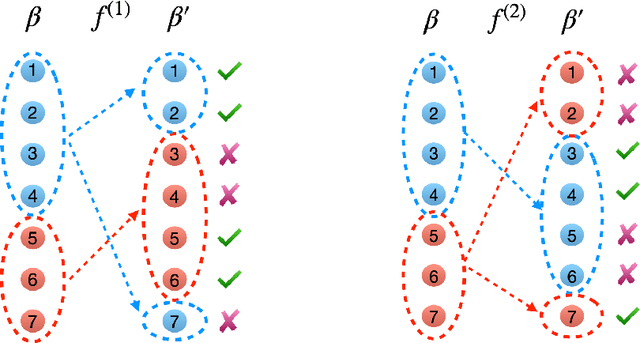
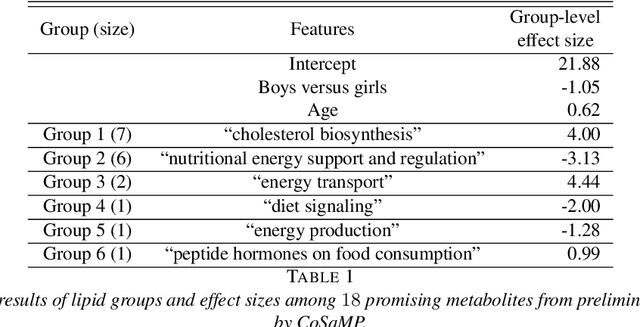
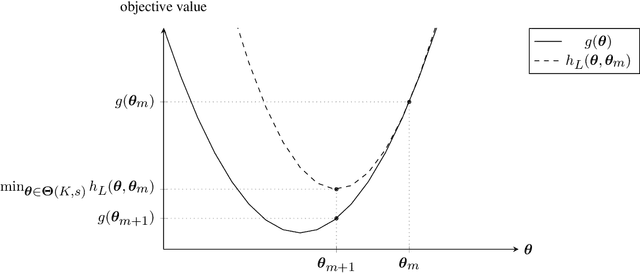
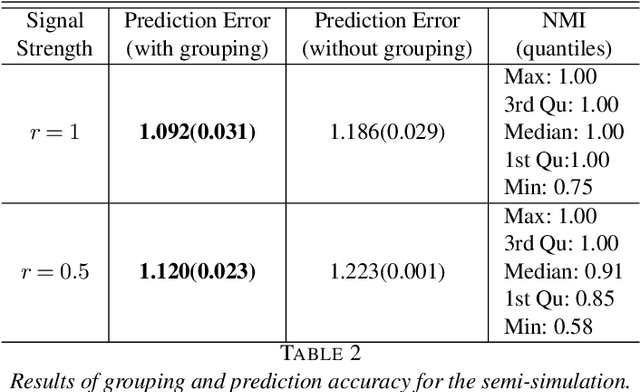
Abstract:Fusing regression coefficients into homogenous groups can unveil those coefficients that share a common value within each group. Such groupwise homogeneity reduces the intrinsic dimension of the parameter space and unleashes sharper statistical accuracy. We propose and investigate a new combinatorial grouping approach called $L_0$-Fusion that is amenable to mixed integer optimization (MIO). On the statistical aspect, we identify a fundamental quantity called grouping sensitivity that underpins the difficulty of recovering the true groups. We show that $L_0$-Fusion achieves grouping consistency under the weakest possible requirement of the grouping sensitivity: if this requirement is violated, then the minimax risk of group misspecification will fail to converge to zero. Moreover, we show that in the high-dimensional regime, one can apply $L_0$-Fusion coupled with a sure screening set of features without any essential loss of statistical efficiency, while reducing the computational cost substantially. On the algorithmic aspect, we provide a MIO formulation for $L_0$-Fusion along with a warm start strategy. Simulation and real data analysis demonstrate that $L_0$-Fusion exhibits superiority over its competitors in terms of grouping accuracy.
Region attention and graph embedding network for occlusion objective class-based micro-expression recognition
Jul 13, 2021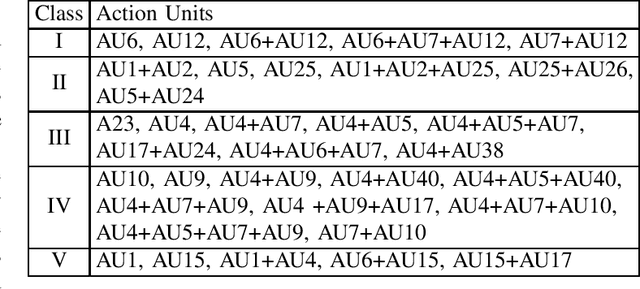

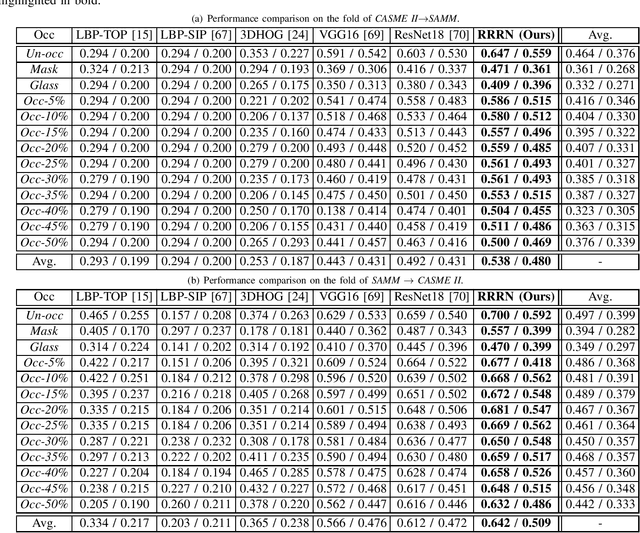
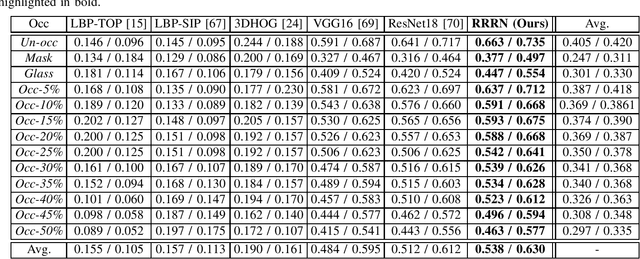
Abstract:Micro-expression recognition (\textbf{MER}) has attracted lots of researchers' attention in a decade. However, occlusion will occur for MER in real-world scenarios. This paper deeply investigates an interesting but unexplored challenging issue in MER, \ie, occlusion MER. First, to research MER under real-world occlusion, synthetic occluded micro-expression databases are created by using various mask for the community. Second, to suppress the influence of occlusion, a \underline{R}egion-inspired \underline{R}elation \underline{R}easoning \underline{N}etwork (\textbf{RRRN}) is proposed to model relations between various facial regions. RRRN consists of a backbone network, the Region-Inspired (\textbf{RI}) module and Relation Reasoning (\textbf{RR}) module. More specifically, the backbone network aims at extracting feature representations from different facial regions, RI module computing an adaptive weight from the region itself based on attention mechanism with respect to the unobstructedness and importance for suppressing the influence of occlusion, and RR module exploiting the progressive interactions among these regions by performing graph convolutions. Experiments are conducted on handout-database evaluation and composite database evaluation tasks of MEGC 2018 protocol. Experimental results show that RRRN can significantly explore the importance of facial regions and capture the cooperative complementary relationship of facial regions for MER. The results also demonstrate RRRN outperforms the state-of-the-art approaches, especially on occlusion, and RRRN acts more robust to occlusion.
Feature refinement: An expression-specific feature learning and fusion method for micro-expression recognition
Jan 13, 2021



Abstract:Micro-Expression Recognition has become challenging, as it is extremely difficult to extract the subtle facial changes of micro-expressions. Recently, several approaches proposed several expression-shared features algorithms for micro-expression recognition. However, they do not reveal the specific discriminative characteristics, which lead to sub-optimal performance. This paper proposes a novel Feature Refinement ({FR}) with expression-specific feature learning and fusion for micro-expression recognition. It aims to obtain salient and discriminative features for specific expressions and also predict expression by fusing the expression-specific features. FR consists of an expression proposal module with attention mechanism and a classification branch. First, an inception module is designed based on optical flow to obtain expression-shared features. Second, in order to extract salient and discriminative features for specific expression, expression-shared features are fed into an expression proposal module with attention factors and proposal loss. Last, in the classification branch, labels of categories are predicted by a fusion of the expression-specific features. Experiments on three publicly available databases validate the effectiveness of FR under different protocol. Results on public benchmarks demonstrate that our FR provides salient and discriminative information for micro-expression recognition. The results also show our FR achieves better or competitive performance with the existing state-of-the-art methods on micro-expression recognition.
 Add to Chrome
Add to Chrome Add to Firefox
Add to Firefox Add to Edge
Add to Edge